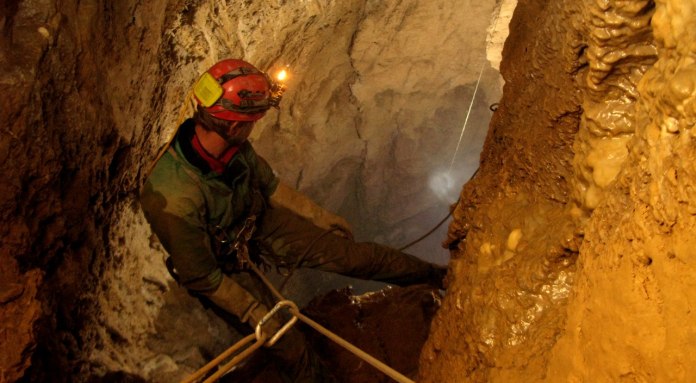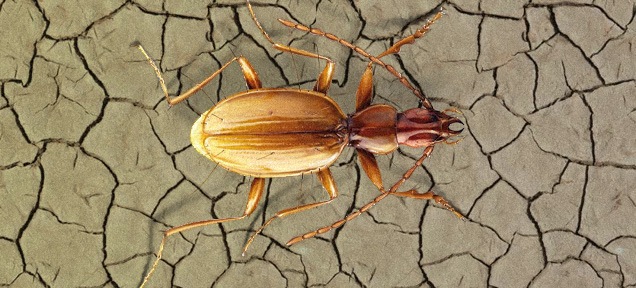Duvalius Abyssimus: A New Species Of Beetle In The World's Deepest Cave

Located in the Republic of Abkhazia, the Voronya Cave plunges 7,188 feet (2,191 m) into the depths of the Arabika Massif, a limestone formation dating back to the Age of Dinosaurs.
Science 2.0 -- Cave beetles are one of the most iconic species found in subterranean habitats. They were historically the first living organisms described by science that are adapted to the conditions of hypogean - subterranean - life.
Now, the unusual habitat of the Krubera cave, 2,140 meters deep. in the Western Caucasus has revealed a new species of beetle, named Duvalius abyssimus. Ana Sofía Reboleira, researcher from the Universities of Aveiro and La Laguna, and Vicente M. Ortuño, from the University of Alcalá, named it in Zootaxa.
"The new species of cave beetle is called Duvalius abyssimus. We only have two specimens, a male and a female. Although they were captured in the world's deepest cave, they were not found at the deepest point," Ortuño, who has dedicated the last 10 years to studying subterranean fauna, told SINC.

The Duvalius genus is a successful colonizer of the Earth's depths. The majority of species have a hypogean lifestyle and live in caves or the superficial underground compartment.
"The new species' characteristics indicate that it is moderately adapted to life underground. Proof of this is that they still have eyes, which are absent in the highly specialized cave species," added the expert.
The Arabika massif region in Abkhazia, where this cave is found, is biogeographically a very interesting area. Altitudes fluctuate between 1,900 and 2,500 meters and the cave is composed of lower and upper Jurassic-Cretaceous limestone.
Its large area has provided endless subterranean refuges for fauna. In fact, various genera of endemic cave beetles live in the Western Caucasus. "Its location is strategic, since there are fauna of European, Asian and also endemic origin in the zone," the scientist underlined.
The entrance to the cave is 2,240 meters above sea level and 15 kilometers from the Black Sea. Below numerous vertically-cutting sections, it reaches a depth of 1,400 meters. From this level, it splits into branches and in order to reach the greatest known depth, it is necessary to pass various flooded underground chambers using diving techniques.
"The discovery of the new beetle provides important data on species that co-exist in these almost unknown ecosystems, even more so when they are found in a geographical area that is very difficult to access, such is the case with this cave," Ortuño concluded.
Source: Science 2.0
Related
- New Beetle Species Revealed in Krubera, World’s Deepest Cave
- Krubera Cave Is Home to New Beetle
- Video: Voronya-Krubera Cave Expedition
